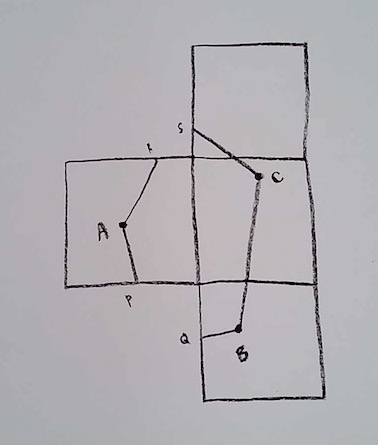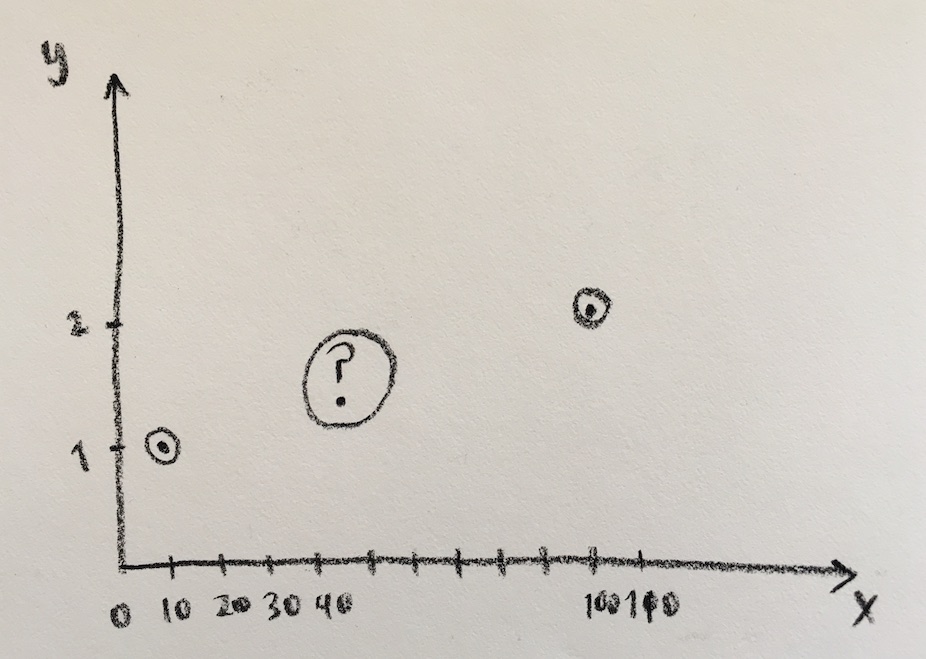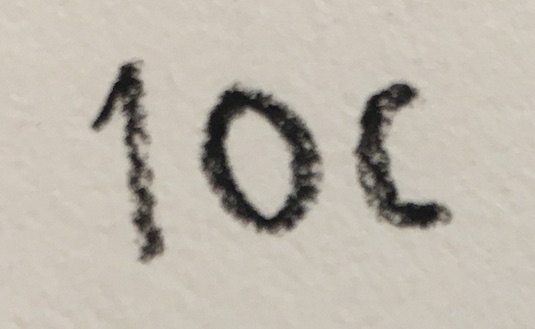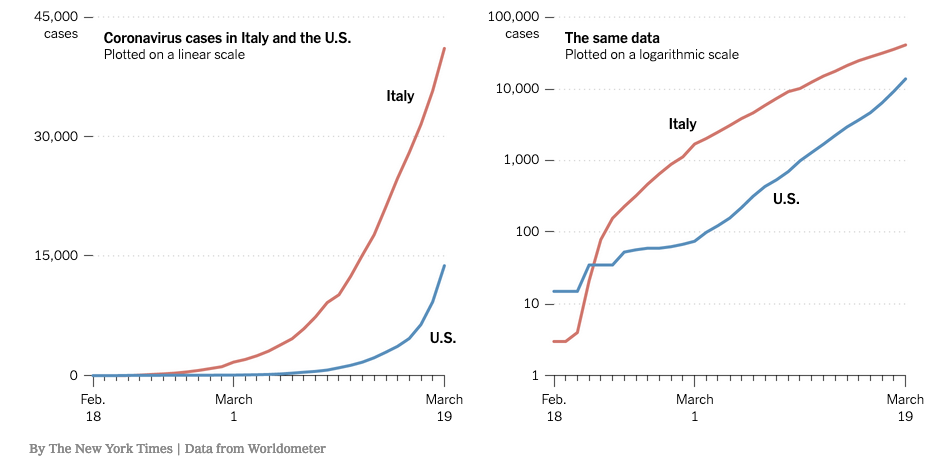In a previous problem set, I asked you what the possible interior angle sums are for triangles in Cubeworld. What is the minimum? What is the maximum?
It seems pretty likely that the minimum is 180 degrees. If a triangle stays on one face, then Cubeworld is exactly Euclidean there. We don’t know how to prove this yet, but it seems pretty solid.
What do the edges do?
Note that the edges don’t actually change the geometry at all. One way to see this is to note that folding a piece of paper does not change any distances measured on the surface of the paper, because paper is not stretchy. So if I draw a straight line–path of shortest distance–from point A to point B on a flat piece of paper:
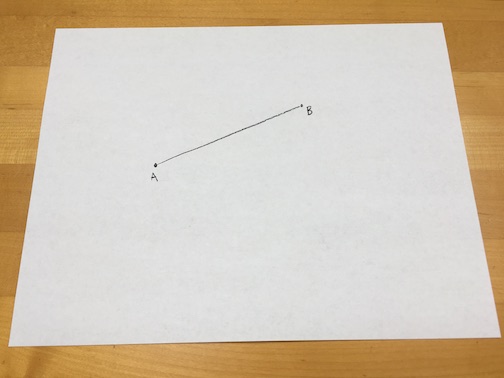
and then I fold the paper, to make an edge of the cube:
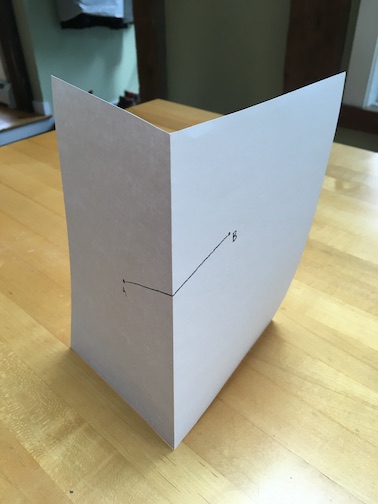
then that path from A to B continues to be a path of shortest distance, since I have not changed any distances. Therefore, I can go back and forth between Euclidean world and “edgeworld” with impunity. The technical name is that there is an “isometry” between the two pictures.
Optional Problem 1: If you find the argument above convincing, you can skip this problem. However, if you find this argument unsatisfying, you can make a more solid argument as follows. Think of the edge as being two flat squares, with a gluing rule: when you leave edge 1, you come out at edge 2 at the same height.

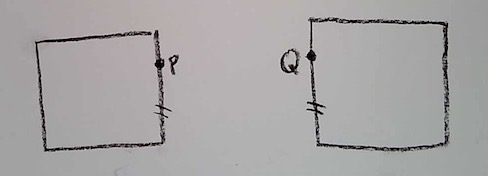
Now, if I have a point A on Face 1, and a point B on Face 2, a Cubeworld straight line between them goes from point A to a point P on Edge 1, which comes out at point Q on Edge 2 and travels to point B. The straight line has to be an ordinary straight line segment on each face (since each face is Euclidean: convince yourself of this!). So the question is, where should point P and Q be, so that the distance AP plus QB is least? Figure out what that placement of P and Q should be, and prove it.
So which triangles have angle sums of 180 degrees?
A triangle that doesn’t contain any vertices can be completely flattened out to a Euclidean one, even if it crosses multiple faces:
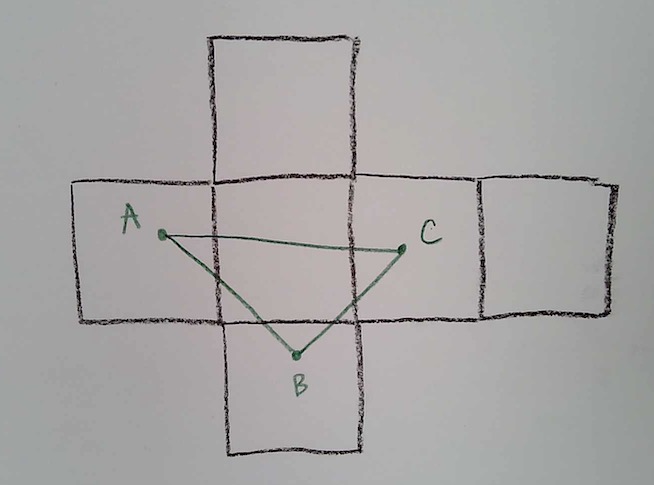
And then it will have a 180 degree angle sum, because it’s a regular Euclidean triangle!
Triangles containing one vertex
So now, what if a triangle includes one vertex in its interior? You gave examples in class where the angle sum is 270 degrees, e.g.:
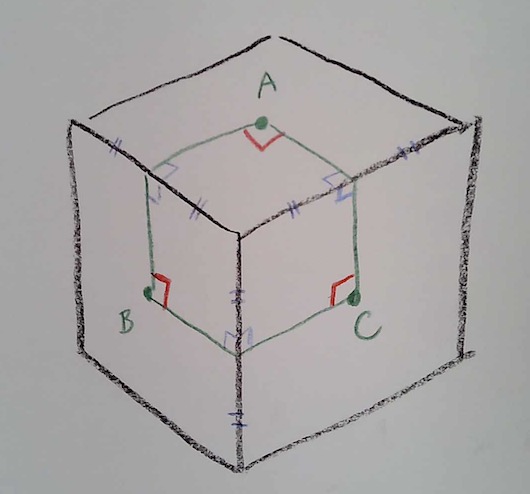
Is it always true that a triangle containing one vertex will have a 270 degree angle sum? Many of you were suspecting this, and a few of you gave an argument for it. Let me run through a way of establishing this fairly concretely, which will also be helpful for other Cubeworld questions.
Lines crossing edges again (in more detail)
First, let’s revisit the question of how lines cross edges. Let’s figure out how to draw them in the flattened picture. So, we have a flattened picture of the cube around one vertex V of the cube; let’s just draw the three faces of the cube that meet at that vertex. We have a point A on one face, and a line that leaves A, crosses an edge at point P, and comes out again at point Q on another face. (Points P and Q are the same point when the cube is glued together.)
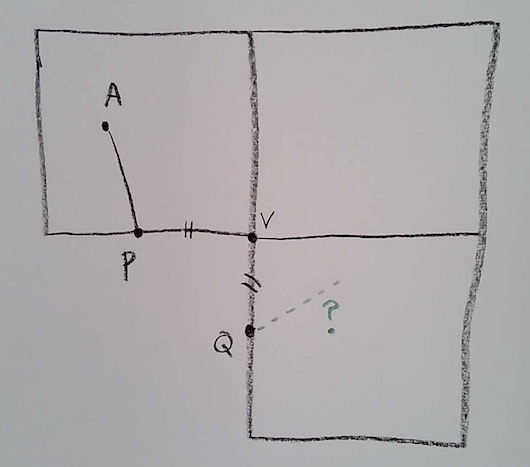
To answer this, let’s imagine the point V as a hinge, and let’s swing that bottom face over, so that P and Q meet. In this way, I’m accomplishing the gluing of the edges to make the cube (but I’m cutting another edge).
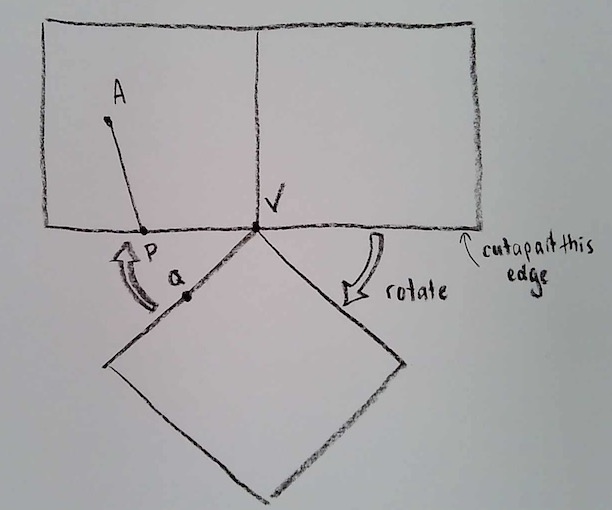
Now that the two sides are glued, so that P and Q meet, it is clear how a straight line should go: the angles should satisfy a=c and b=d.
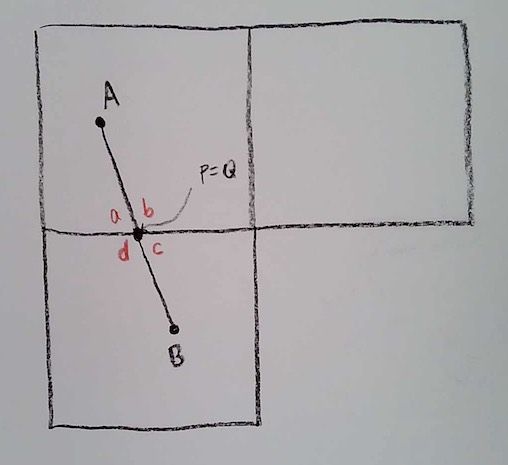
Now, rotate the bottom face back to its original position, and we get a rule–which looks much less obvious now!–about how the line segment AP should be continued when it comes out at Q:

Triangles containing one vertex, continued
Ok, now back to a triangle containing one vertex. Let’s take the picture we just drew, and add a third point C, so that ABC is a Cubeworld triangle.
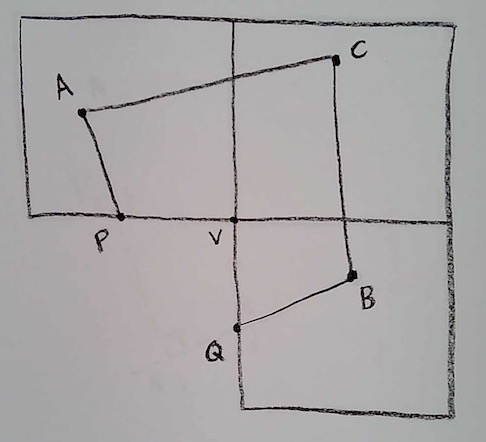
Now, let’s label every angle in sight:
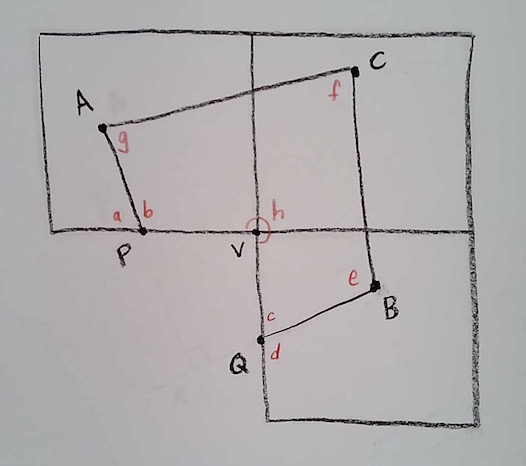
The internal angle sum of Cubeworld triangle ABC is e+f+g. We would like to argue that e+f+g is 270 degrees, no matter where we place A, B, and C (provided that the interior of ABC contains vertex V).
Now, notice that we have created an ordinary euclidean 6-gon APVQBC:
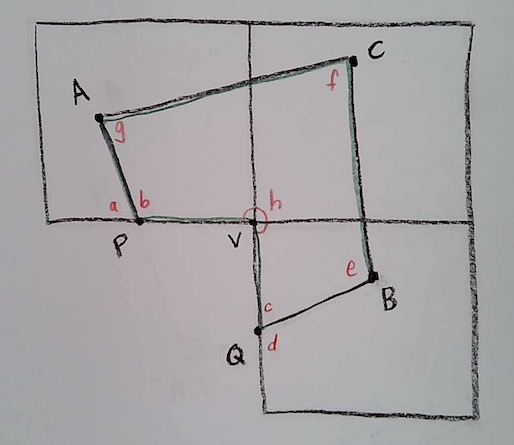
A Euclidean polygon with 6 sides will have an interior angle sum of 720 degrees. I’ll leave it to you to explain why:
Problem 1: Explain why a Euclidean 6-gon will have an internal angle sum of 180 x 4 = 720 degrees.
This means that
e + f + g + b + h + c = 720 degrees.
But now what do we know? We know that h = 270 degrees:
e + f + g + b + 270 + c = 720,
so e + f + g + b + c = 720 – 270,
so e + f + g + b + c = 450 degrees.
We also know that c = a, so we can substitute a for c in our equation:
so e + f + g + b + a = 450 degrees.
But now look at what has happened! We know that b + a = 180 degrees!
e + f + g + 180 = 450
e + f + g = 450 – 180
e + f + g = 270 degrees!
We didn’t assume anything about the placement of A, B, and C, except that V was contained in the interior. So we know that:
Any Cubeworld triangle not containing a vertex in its interior has an interior angle sum of 180 degrees
Any Cubeworld triangle containing one vertex in its interior has an interior angle sum of 270 degrees
Another method
Before we move on, I’d like to show another way of solving this problem, that perhaps some of you would like better.
Let’s say we continue the line segment AP beyond P, into the region which doesn’t correspond to any cube face. Let’s do the same for the line segment BQ. Then, the extended AP and BQ will meet at a new point R (which is not on the cube at all, but is on our flat paper):
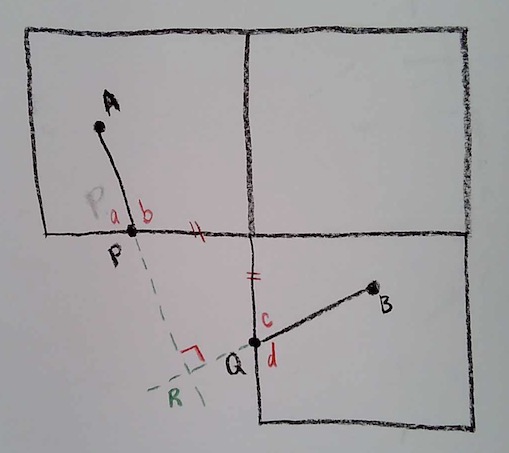
Now, by the process described above, when P and Q were meeting, we then took the bottom square and rotated it 90 degrees, to put it back in its original position. Consequently, we have rotated the line BQ by 90 degrees. Before the rotation, BQ and AP lined up; therefore, after the rotation, the extended lines from AP and from BQ ought to be at 90 degrees to each other.
Problem 2: Use this new point R to give an easier proof that
e + f + g = 270 degrees.
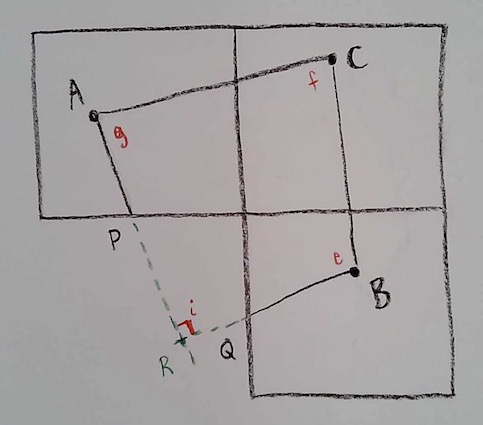
Triangles containing two vertices
Problem 3: Find a Cubeworld triangle that contains two vertices in its interior, if you haven’t already. Try to make it as simple as possible. Find the sum of the interior angles. Does this seem to make sense with what you know already?
Problem 4: Find the angle sum for any Cubeworld triangle that contains two vertices in its interior, if you haven’t already. Make an explanation (proof!) similar to one of the ones I gave for a triangle containing one vertex earlier in this lecture. Your diagram should look something like this:
